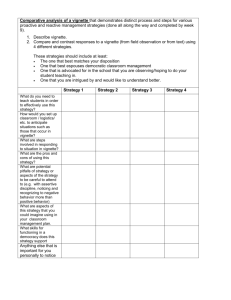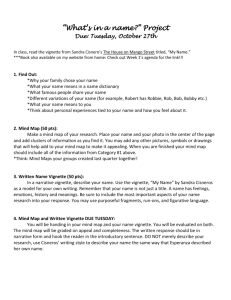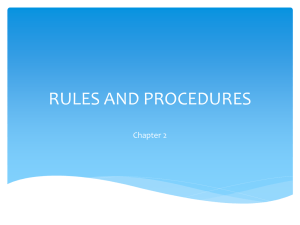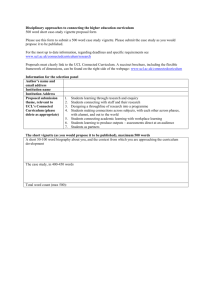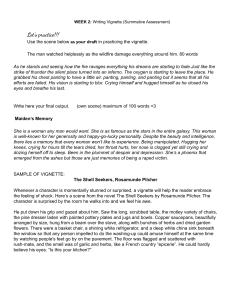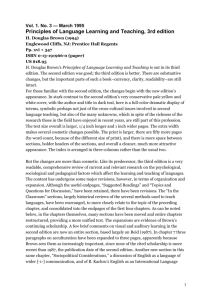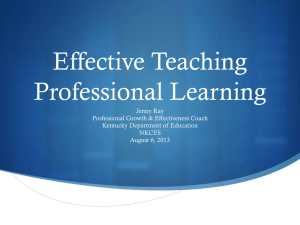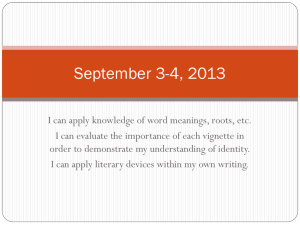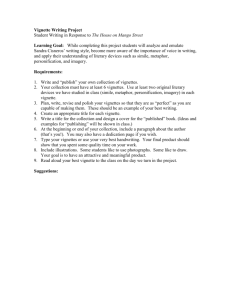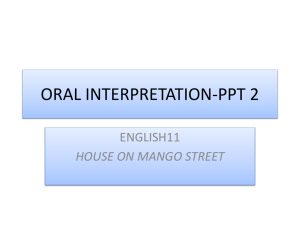Vocabulary Instruction and the Common Core Vignette Professional
advertisement
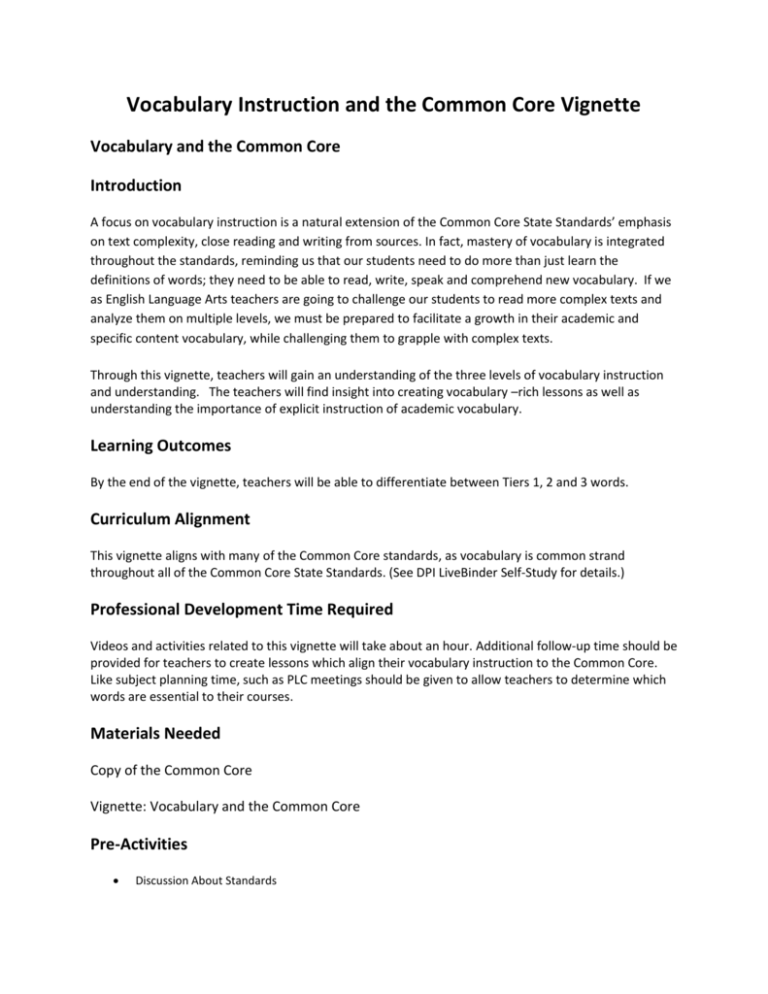
Vocabulary Instruction and the Common Core Vignette Vocabulary and the Common Core Introduction A focus on vocabulary instruction is a natural extension of the Common Core State Standards’ emphasis on text complexity, close reading and writing from sources. In fact, mastery of vocabulary is integrated throughout the standards, reminding us that our students need to do more than just learn the definitions of words; they need to be able to read, write, speak and comprehend new vocabulary. If we as English Language Arts teachers are going to challenge our students to read more complex texts and analyze them on multiple levels, we must be prepared to facilitate a growth in their academic and specific content vocabulary, while challenging them to grapple with complex texts. Through this vignette, teachers will gain an understanding of the three levels of vocabulary instruction and understanding. The teachers will find insight into creating vocabulary –rich lessons as well as understanding the importance of explicit instruction of academic vocabulary. Learning Outcomes By the end of the vignette, teachers will be able to differentiate between Tiers 1, 2 and 3 words. Curriculum Alignment This vignette aligns with many of the Common Core standards, as vocabulary is common strand throughout all of the Common Core State Standards. (See DPI LiveBinder Self-Study for details.) Professional Development Time Required Videos and activities related to this vignette will take about an hour. Additional follow-up time should be provided for teachers to create lessons which align their vocabulary instruction to the Common Core. Like subject planning time, such as PLC meetings should be given to allow teachers to determine which words are essential to their courses. Materials Needed Copy of the Common Core Vignette: Vocabulary and the Common Core Pre-Activities Discussion About Standards Standards Progression Integration Shift #1: Building Knowledge through Content-Rich Non-Fiction & Informational Texts Shift #2: Using Evidence Shift #3: Regular Practice with Complex Text and Its Academic Vocabulary Placemats Choosing Text Lesson Design Scaffolding Discussion Text Dependent Questions 1. Before using the vignette, have teachers . . . (insert activity such as review/read a section of the Common Core, review a document on DPI LiveBinder, etc.) 2. View Roundtable discussion 3. Using the talking points below, have teachers continue the roundtable discussion adding points, questioning, connecting, etc. How does word maturity affect our students’ abilities to read, speak, listen and write? How do we determine which academic vocabulary is necessary for our students to learn? What is a strategy you use for helping students understand the semantic relationships between words? How can we help students understand the importance of word choice in author’s craft? Vocabulary is seen in six different places in the standards. What does that tell us about the importance of vocabulary instruction? 4. End discussion by asking teachers to think about ways they can / need to incorporate new ideas into their classrooms 5. Watch the “in-action” piece 6. Discuss “in-action” Questions for in-action piece will follow recording of this piece. Reflection Vocabulary instruction continues to be an element of teaching the Common Core State Standards which is difficult for me. I struggle to determine which words are truly the most important for students to learn. This skill is one that I need to continue to work on as I incorporate vocabulary instruction in my classroom. Prior to this school year, my school’s focus on vocabulary instruction was simply a test-prep kind of vocabulary program. While I see the importance of this kind of preparation, I also know that we were doing a disservice to many of our students. I have begun to think about vocabulary instruction as one more element I need to integrate into all aspects of my teaching. I have also started to spend more time with academic vocabulary, specifically questioning words. I believe that continued work with these standards will provide my students with the opportunity to build their working vocabulary in ways I have not provided them before. Opportunity for Extension 7. Read reflection 8. Make a change / incorporate new learning into their classrooms 9. Write reflection / blog / come back together to reflect on process / implementation / etc. Comments Professional development coordinators should feel free to add to or subtract from structured activities according to available time. Author Info Jasmine Hart is a National Board Certified Teacher who has been teaching English and English as a Second Language since 1999. She has taught English I, English II, Structured Writing, English III, African American Studies and Theater Arts during her career. Jasmine serves as the English Co-Department Chair at her school, and works as a local association representative. She works with the theater department at school and is the book club advisor. She was first introduced to the Common Core State Standards about 2 years ago. Her most recent work has been working with the North Carolina Department of Instruction as a Kenan Fellow. This collection of professional development vignettes is the product of that work.
